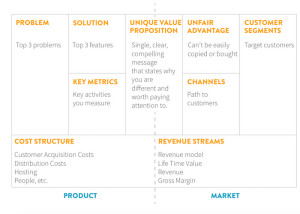Sandra Uddbäck from Tink told us to “go out of office” and interact with potential users in order to receive information about them. She did also give us a great advice, which I totally agree with, about how to get the right answers. Just like she explained, you should not go out and present your whole idea and ask them “Do you like it? Would you pay for this?” A lot of people might say yes but this is not equal to that they would actually pay for it when the idea is launched…
The book “The mom test” (by Rob Fitzpatrick) is a great source of how to deal with this situation and what the right questions are and how you evaluate the answers. Fitzpatrick explains how to save time and money while receiving reliable information that is not biased because someone is polite to you. Tink handle their marketing smart due to the fact that they do not have a lot of money. They have to get a lot of value for the money they spend and I think that is the right approach for most of today’s smaller businesses and start-ups. I mean, who does not want to be efficient?

I have actually some good experience myself with interviewing people after reading “The mom test”. After reading the book you are not actually interviewing people but more having a casual conversation and receiving a ton of useful information. You and the person you are talking to will be more relaxed. Just like Sandra pointed out you do not want to have short answers on very specified questions. Instead you should ask open questions and let them tell you their story and how they deal with a certain issue. For example if you want to develop a toothbrush you should not ask if they would like a toothbrush that could decrease the time they spend brushing their teeth. You should instead ask them to walk you through their morning routine. If you find out that they are actually not in a hurry in the morning it might not exist a demand for your toothbrush idea. This can save you a lot of money and time when evaluating your idea and can give you good information about another need.
So I advice you to read “The mum test” if you want to get good information out of your users that really matters.
Just let me know if you are wondering anything about the book!
Sebastian


